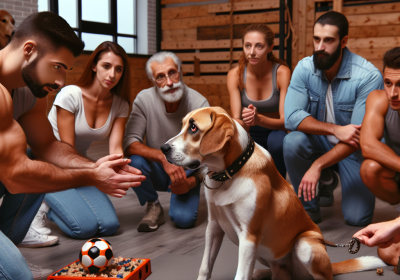Creating Challenging Canine Freework Tasks for Dogs
Table of Contents
- Innovative Ideas for Canine Freework Challenges
- Benefits of Complex Freework Tasks for Dog Development
Creating challenging canine freework tasks for dogs involves designing activities that stimulate a dog’s natural instincts and cognitive abilities. These tasks are crafted to engage a dog’s senses, promote problem-solving skills, and provide physical and mental enrichment. By incorporating a variety of textures, scents, and obstacles, freework tasks can help improve a dog’s confidence, reduce stress, and enhance their overall well-being. The goal is to create an environment where dogs can explore and interact with their surroundings in a safe and controlled manner, fostering a deeper bond between the dog and their handler while promoting a healthy, active lifestyle.
Enhancing Problem-Solving Skills Through Canine Freework
Canine freework, an innovative approach to dog training and enrichment, offers a multitude of benefits, particularly in enhancing problem-solving skills. This method, which emphasizes allowing dogs to explore and interact with their environment freely, can significantly contribute to their mental stimulation. By engaging in activities that challenge their cognitive abilities, dogs can develop sharper problem-solving skills, leading to a more balanced and fulfilled life.
One of the primary ways canine freework enhances problem-solving skills is by encouraging dogs to think independently. Unlike traditional training methods that often rely on repetitive commands and structured exercises, freework allows dogs to make their own decisions. This autonomy fosters a sense of curiosity and exploration, prompting dogs to figure out how to navigate various obstacles and puzzles. For instance, when presented with a complex toy or a hidden treat, dogs must use their senses and cognitive abilities to determine the best approach to achieve their goal. This process of trial and error is crucial for developing problem-solving skills, as it teaches dogs to analyze situations and adapt their strategies accordingly.
Moreover, canine freework can be tailored to suit the individual needs and preferences of each dog, making it an inclusive and versatile method. By observing a dog’s natural behaviors and inclinations, owners can create customized activities that challenge their pets in unique ways. For example, a dog with a keen sense of smell might benefit from scent-based games, where they must locate hidden objects using their olfactory abilities. On the other hand, a dog that enjoys physical challenges might thrive in an environment with various obstacles to climb and navigate. This personalized approach ensures that each dog is mentally stimulated in a way that is both enjoyable and effective.
In addition to fostering independence and customization, canine freework also promotes social interaction and cooperation. When dogs engage in freework activities with their owners or other dogs, they must communicate and collaborate to achieve their objectives. This interaction not only strengthens the bond between dogs and their human companions but also enhances their social skills. For instance, a group of dogs working together to solve a puzzle must learn to share resources and take turns, which can improve their ability to work as a team. These social dynamics are essential for developing well-rounded problem-solving skills, as they teach dogs to consider multiple perspectives and approaches.
Furthermore, the mental stimulation provided by canine freework can have a positive impact on a dog’s overall well-being. Engaging in challenging activities helps to alleviate boredom and reduce stress, which are common issues for many dogs, particularly those left alone for extended periods. By providing an outlet for their mental energy, freework can prevent the development of destructive behaviors often associated with boredom and anxiety. Additionally, the sense of accomplishment that comes from successfully solving a problem can boost a dog’s confidence and self-esteem, leading to a happier and more contented pet.
In conclusion, canine freework is a valuable tool for enhancing problem-solving skills in dogs. By promoting independence, customization, social interaction, and overall well-being, this method provides a comprehensive approach to mental stimulation. As dogs navigate the challenges presented by freework activities, they develop critical cognitive abilities that contribute to a more balanced and fulfilling life. Therefore, incorporating canine freework into a dog’s routine can be a highly effective way to nurture their mental and emotional growth.
Innovative Ideas for Canine Freework Challenges

Creating challenging canine freework tasks for dogs is an innovative approach to enhancing their physical and mental well-being. Freework, a concept that encourages dogs to engage in natural behaviors through unstructured activities, can be tailored to suit various skill levels and interests. By incorporating a variety of elements, dog owners and trainers can create stimulating environments that promote problem-solving, confidence, and overall happiness in their canine companions.
To begin with, it is essential to understand the fundamental principles of canine freework. This method emphasizes allowing dogs to explore and interact with their surroundings at their own pace, without direct human intervention. By doing so, dogs can engage in behaviors such as sniffing, digging, and climbing, which are instinctual and fulfilling. Therefore, the first step in creating challenging freework tasks is to provide a diverse range of materials and textures. For instance, incorporating items such as sand, gravel, grass, and water can offer varied sensory experiences that keep dogs engaged and curious.
Transitioning from the basics, it is crucial to introduce elements that require problem-solving and critical thinking. One effective way to achieve this is by setting up obstacle courses that challenge a dog’s agility and coordination. These courses can include tunnels, ramps, and balance beams, which not only test physical abilities but also encourage mental focus. Additionally, incorporating puzzle toys and treat-dispensing devices can further stimulate a dog’s cognitive functions. These tools require dogs to figure out how to access hidden rewards, thereby enhancing their problem-solving skills.
Moreover, scent-based activities are an excellent addition to any freework task. Dogs have an extraordinary sense of smell, and utilizing this ability can provide immense satisfaction. Scent trails, where treats or toys are hidden along a path, can encourage dogs to use their noses to track and locate the items. This activity not only engages their olfactory senses but also promotes patience and perseverance. Furthermore, scent-based games can be made progressively more challenging by increasing the complexity of the trails or by using scents that are less familiar to the dog.
In addition to physical and mental challenges, social interactions play a vital role in canine freework. Introducing tasks that involve other dogs can enhance social skills and provide opportunities for cooperative play. For example, setting up group activities where dogs must work together to achieve a common goal, such as moving an object or solving a puzzle, can foster teamwork and communication. These interactions can also help reduce anxiety and build confidence, particularly in dogs that may be shy or fearful.
Transitioning to the final aspect, it is important to regularly vary the freework tasks to maintain a dog’s interest and enthusiasm. Rotating different activities and introducing new challenges can prevent boredom and ensure continuous engagement. Additionally, observing a dog’s preferences and adjusting tasks accordingly can lead to more personalized and effective freework sessions. For instance, if a dog shows a particular interest in digging, incorporating more digging-related activities can enhance their enjoyment and participation.
In conclusion, creating challenging canine freework tasks involves a thoughtful combination of sensory experiences, problem-solving activities, scent-based games, social interactions, and regular variation. By carefully designing these tasks, dog owners and trainers can provide enriching environments that cater to the physical, mental, and emotional needs of their canine companions. This innovative approach not only promotes overall well-being but also strengthens the bond between dogs and their human counterparts.
Step-by-Step Guide to Advanced Canine Freework
Canine freework is an innovative approach to providing mental stimulation for dogs, engaging their natural instincts and cognitive abilities. This method involves allowing dogs to explore and interact with their environment in a controlled yet unstructured manner. By doing so, it taps into their innate curiosity and problem-solving skills, offering a rich and fulfilling experience. To delve into advanced canine freework, it is essential to understand the step-by-step process that ensures both safety and effectiveness.
To begin with, selecting an appropriate environment is crucial. The chosen area should be safe, secure, and free from potential hazards. It should also offer a variety of textures, scents, and objects to stimulate the dog’s senses. This could be an enclosed garden, a designated room in the house, or a secure outdoor space. Once the environment is set, the next step involves introducing the dog to the space. Allow the dog to explore at its own pace, without any immediate commands or interventions. This initial phase is about observation and understanding the dog’s natural inclinations and preferences.
As the dog becomes more comfortable, gradually introduce various objects and challenges. These could include puzzle toys, scent trails, or hidden treats. The key is to offer a range of stimuli that encourage the dog to use its nose, paws, and brain. For instance, hiding treats in different locations can prompt the dog to use its sense of smell to locate them. Similarly, puzzle toys that require manipulation can engage the dog’s problem-solving abilities. It is important to vary these challenges regularly to maintain the dog’s interest and prevent monotony.
Throughout the process, it is essential to monitor the dog’s behavior and responses. Look for signs of engagement, such as focused sniffing, pawing, or tail wagging. Conversely, be mindful of any signs of stress or frustration, such as excessive panting, whining, or avoidance behaviors. If the dog appears overwhelmed, it may be necessary to simplify the tasks or provide a break. The goal is to create a positive and enriching experience, not to induce stress.
Incorporating positive reinforcement is another critical aspect of advanced canine freework. Rewarding the dog with treats, praise, or playtime for successfully completing tasks reinforces desired behaviors and encourages continued participation. This reinforcement should be immediate and consistent to establish a clear connection between the behavior and the reward. Over time, the dog will associate the freework activities with positive outcomes, enhancing its motivation and enthusiasm.
As the dog progresses, the complexity of the tasks can be gradually increased. This could involve more intricate puzzles, longer scent trails, or multi-step challenges. The key is to build on the dog’s existing skills while introducing new elements that require higher levels of cognitive engagement. It is also beneficial to rotate the types of activities to ensure a well-rounded stimulation of the dog’s senses and abilities.
In conclusion, advanced canine freework is a highly effective method for providing mental stimulation to dogs. By carefully selecting the environment, introducing varied challenges, monitoring the dog’s responses, and incorporating positive reinforcement, owners can create a fulfilling and enriching experience for their canine companions. This approach not only taps into the dog’s natural instincts but also promotes cognitive development and overall well-being. Through consistent practice and thoughtful progression, advanced canine freework can become a valuable component of a dog’s daily routine, contributing to a happier and more balanced life.
Benefits of Complex Freework Tasks for Dog Development
Creating challenging canine freework tasks for dogs is an essential aspect of their development, offering numerous benefits that contribute to their overall well-being. Engaging dogs in complex freework tasks not only stimulates their minds but also enhances their physical health, emotional stability, and social skills. By understanding the multifaceted advantages of these activities, dog owners and trainers can better appreciate the importance of incorporating them into their pets’ routines.
To begin with, complex freework tasks provide significant mental stimulation for dogs. These activities require dogs to think critically, solve problems, and make decisions, which helps to keep their minds sharp and engaged. Mental stimulation is crucial for preventing boredom, which can lead to undesirable behaviors such as excessive barking, chewing, or digging. By challenging their cognitive abilities, dogs are more likely to remain content and well-behaved, making them easier to manage and train.
In addition to mental stimulation, complex freework tasks also promote physical health. Many of these activities involve movement, agility, and coordination, which help to keep dogs physically fit and active. Regular physical exercise is essential for maintaining a healthy weight, improving cardiovascular health, and strengthening muscles and joints. Furthermore, engaging in physical activities can help to release pent-up energy, reducing the likelihood of hyperactivity and restlessness. Consequently, dogs that participate in challenging freework tasks are more likely to enjoy a higher quality of life and a longer lifespan.
Moreover, complex freework tasks can have a profound impact on a dog’s emotional well-being. These activities often require dogs to work through frustration and overcome obstacles, which can build resilience and confidence. As dogs successfully complete tasks and receive positive reinforcement, they develop a sense of accomplishment and self-assurance. This boost in confidence can translate to other areas of their lives, making them more adaptable and better equipped to handle new experiences and environments. Additionally, the bond between dogs and their owners can be strengthened through these shared activities, fostering a deeper sense of trust and companionship.
Social skills are another critical area of development that can be enhanced through complex freework tasks. Many of these activities can be designed to involve interactions with other dogs or humans, providing opportunities for socialization. Socialization is vital for helping dogs learn appropriate behaviors and communication skills, which can prevent aggression and anxiety in social situations. By regularly exposing dogs to new and varied social experiences, they become more well-rounded and better able to navigate the complexities of their social world.
Furthermore, the versatility of complex freework tasks allows for customization to suit the individual needs and abilities of each dog. This adaptability ensures that dogs of all ages, breeds, and skill levels can benefit from these activities. For instance, older dogs or those with physical limitations can engage in tasks that focus more on mental challenges, while younger, more agile dogs can participate in activities that emphasize physical exertion. This tailored approach ensures that every dog can experience the benefits of freework tasks, regardless of their unique circumstances.
In conclusion, creating challenging canine freework tasks for dogs offers a multitude of benefits that contribute to their overall development. By providing mental stimulation, promoting physical health, enhancing emotional well-being, and improving social skills, these activities play a crucial role in fostering well-rounded, happy, and healthy dogs. As dog owners and trainers recognize the importance of incorporating complex freework tasks into their pets’ routines, they can help to ensure that their canine companions lead fulfilling and enriched lives.
Read more about Canine Freework
Canine Freework and Mental Stimulation
– The Importance of Mental Stimulation for Dogs
– How Canine Freework Can Provide Mental Stimulation
– Creating Challenging Canine Freework Tasks for Dogs
– Combining Canine Freework with Mental Exercises
– Overcoming Mental Challenges in Canine Freework


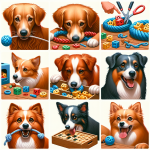
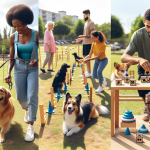
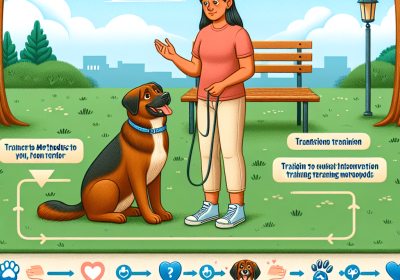
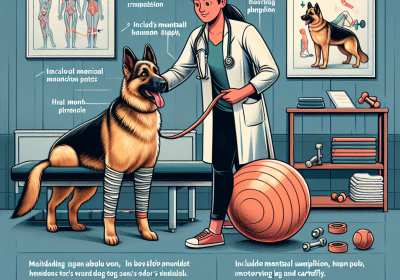
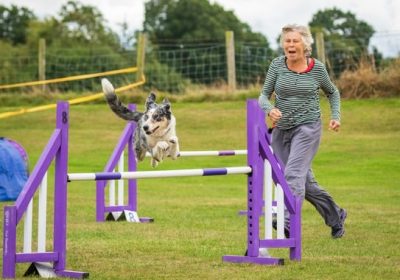
![The Dog Podcast Uncovers Startling Truths About What We Feed Our Dogs [Press Release]](https://wordcraftershub.com.au/wp-content/uploads/2024/08/dalmatian-dog-food-400x280.jpg)
